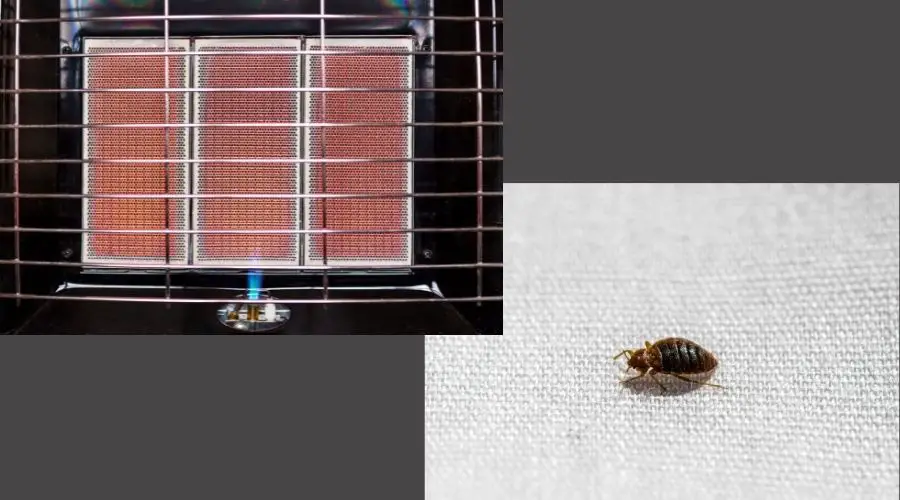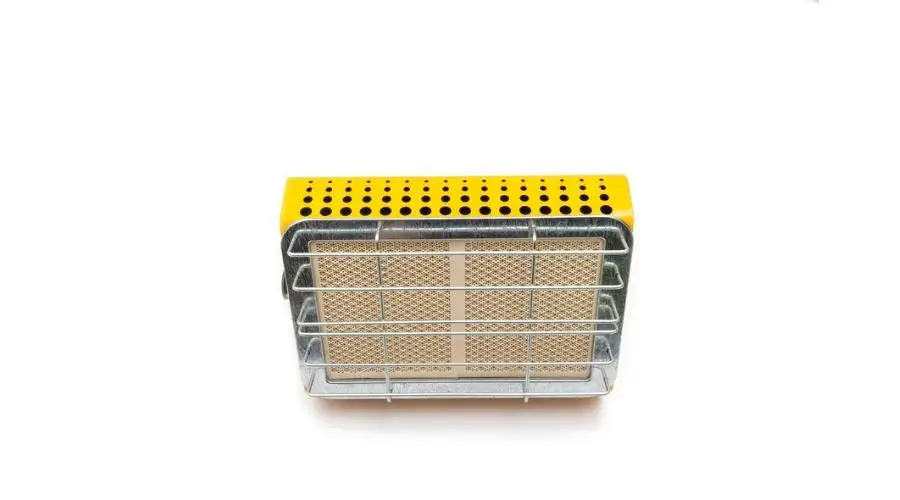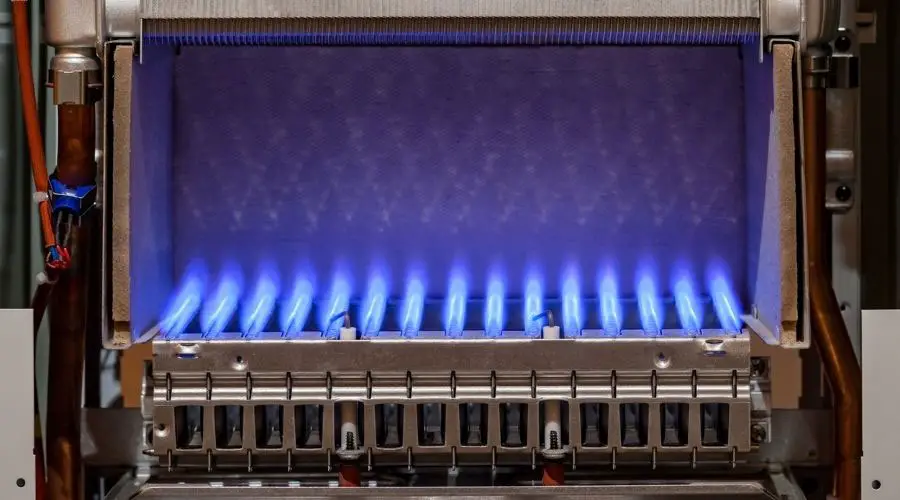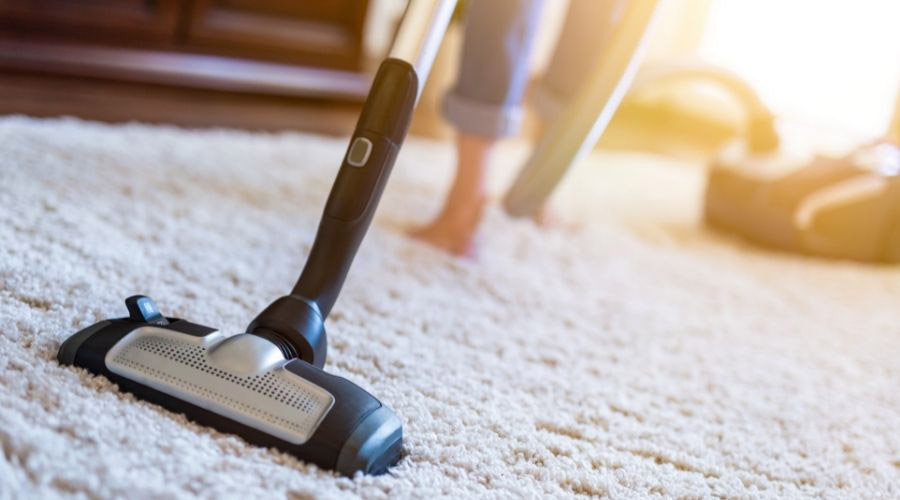
One of the many reasons you clicked on this article is that it is 2 AM, and you cannot sleep because you are getting bit by these nasty creatures called bed bugs!
These are some of the most annoying and difficult bugs that are EXTREMELY hard to get rid of and will break your bank, with treatments anywhere between $1000-3000, depending on your house’s size. You may not have known about propane heaters being able to treat bed bugs.
Propane heaters are used as an effective treatment for ridding bed bugs. These heaters are 100% eco-friendly and a great alternative to conventional methods. It is typically referred to as “heat treatment” because your building or rooms in the home are put to great temperatures, eliminating bed bugs.
Today we will be going over the ultimate guide on killing bed bugs with a propane heater and what precautions should be taken into account when it comes to these things.
There are many nitty-gritty details to go over when it comes to ridding bed bugs from your home, and it is essential to know all the information.
What Exactly ARE Bed Bugs?
In short, bed bugs are a straight-up nuisance. However, bed bugs are an insect with a technical term called Cimex lectularius. They can cause numerous health issues, such as skin rashes, ranging from minor redness to constant blisters forming.
Not only that, but Cimex bugs can also create allergy symptoms and physiological effects. They make you extremely paranoid and cause you to become an insomniac. Bed bugs essentially make you go crazy in a sense.
You’ll wind up feeling incredibly lonely because no one wants to be around you if you have these nasty creatures in your home.
This is because bed bugs will attach to anything they can, including lots of fabric or soft items, such as purses, backpacks, clothes, luggage, etc.
They are like miniature hitchhikers trying to run away from something they committed a crime to… which is accurate, being on or near HUMANS!
So, if you have them in your home, there must have been somewhere where you caught it, which essentially can be anywhere.
They are most commonly found in hotels and other things of the sort, so always make sure to check your surroundings at those places like the walls, floors, corners, crevices, cracks, mattresses, pillows, etc.

Can A Portable Propane Heater Kill Bed Bugs?
As mentioned previously, propane heaters are very effective in ridding bed bugs away. Since heat can get into every crevice and corner of the home, they cannot hide somewhere good enough to continue living.
Of course, you CAN have alternative treatments for them, such as rubbing alcohol, tea tree oil, and lavender oil solutions, but this will not guarantee a 100% clean-up, as they can move somewhere that does not smell these things while doing so.
Although using propane heaters DOES take a while to heat up in itself, it will still do the job of getting it done. Plus, a propane heater is very eco-friendly.
Always place these heaters near a window or air vent to prevent gas from building up, but we recommend getting industrial fans to keep the air circulating throughout the house. Although you will not be inside your home, this will keep your home safe.
How Does This Solution Work?
Bed bug treatments are straightforward to do. The propane heaters should bring the temperature to an extremely high temperature for bed bugs and their eggs to survive, especially if you have more than one or two.
This treatment will last between 3-8 hours, depending on your home’s needs. You will not typically need a follow-up in most case scenarios.
The heat will then radiate into any fabric and linen items, such as inside the mattress, chairs, and couches. Heat treatment is one of the most viable options for any household, great or small because the warmth will find and trap itself in the smallest of areas, whereas other treatments may not have this option.
What Heat Temperature Kills Bed Bugs?
If you do not treat bed bugs, an adult Cimex can last up to one year by itself without eating anything. However, heating and freezing-cold temperatures can both kill bed bugs.
Adult bed bugs will die at 118 degrees Fahrenheit, while it will take a bit more heat to get rid of the eggs at 125 degrees.
For best results, you must bring temperatures to 135-145 degrees Fahrenheit (or the sauna’s temperature) to ensure this heating treatment is effective.
Some objects that can be safely baked can also go in the oven for 3-5 hours so you can dispose of these pests. Ensure you are taking all safety precautions for this as well.
Tips & Tricks For A DIY Solution
There are quite a few things to keep in mind before starting. One of the main things we should mention is self-explanatory: staying out of the house during these times, significantly when temperatures rise.
Propane heaters to get rid of bed bugs are available to purchase or rent in various sizes and strengths. U-Haul is a great place to go for this.
You have to consider that a temperature reaching 135-145 degrees will take time, so patience is a virtue in all of this. It would be an excellent option to do this on a day when you have nothing going on.
Even so, the first time you suspect you have bed bugs, it is wise to drop everything on your schedule and take that care first and foremost.
The heat in itself needs to be sealed in tightly so heat does not escape, so make sure to use foam or caulk to tightly seal windows, doorways, and cracks in the walls.
One final and last thing to go over is that the bigger the area needs to be treated, the larger heater you will need. So, if you have a house infested with these gross beings, then a requirement of an industrial-sized heater is meant to act, but for a small bedroom or just a mattress, then a portable propane heater should do the job nicely.
Things To Have Before Starting:
- Propane heater
- One or more propane tanks
- Industrial fans (to keep air moving)
- Something to monitor the temperature (like a temperature probe)

Is A Bed Bug Treatment Toxic?
If you are treating bed bugs with heat, it should not be toxic whatsoever. Heat is non-chemical, fast, and discreet. Heating treatments should also not produce any odor, residue, or the need to replace costly objects, like heavy furniture.
However, there is another form of treatment: pesticides, but we do not recommend this option, as it only takes one time to rid bed bugs from your home with heat, but using chemicals may take 2-3 times.
Not only that, but using pesticides to rid your home of Cimex may cause health symptoms such as dizziness, nausea, headaches, and vomiting. Realistically, anything that causes health problems should not use anything.
Will A Heating Treatment Ruin My Household Items?
Having a heat treatment done within your home is time-intensive but can also cause damage to some of your objects. Even with a propane heater, many treated items can be damaged, such as lipsticks, candles, crayons, chocolates, medicines, etc.
Always make sure you take these items out and thoroughly prepare your household before deciding to treat your home with heat.
How Do I Prepare My House For Bed Bug Heat Treatment?
One of the many questions people ask is about preparing their homes for bed bug heat treatments. Since we already know that objects can get ruined within your houses, wouldn’t it be better to take them out?
Well, yes. In that case, it is essential to thoroughly examine those objects and place them in a tightly sealed container where nothing can get in or out, like a plastic storage bin.
Before starting this process, you should consider all objects and living creatures (aside from bed bugs). Even if you think you may not have these items within your home, always double-check the areas and treat them as if it were a moving day.
These things include, but are not limited to:
- Animals (dogs, cats, birds, fish, etc.)
- Household plants.
- Fresh food (fruit, vegetables, meats, etc.)
- Foods that can melt (chocolate, candy, etc.)
- Medications (prescription and over-the-counter.)
- Flammable and explosive objects (fireworks, lighters, solvents, lamp fuel, bleach, ammonia, etc.)
- Anything made with wax (candles, wax fruit, crayons, wax figurines, dental floss, cosmetics, etc.)
- Pressurized items (soda bottles and cans, fire extinguishers, propane bottles, aerosol cans, oxygen bottles, etc.)
- Any form of alcohol (liquor, wine, rubbing alcohol, etc.)
- Wooden and stringed instruments, but leave the case behind since it has places bed bugs can hide in.
- Photo negatives
- Taxidermy items
- Firearms and ammunition, especially if you have gunpowder.
Always Assume The Worst
You should always assume that every single object within your home has bed bugs on it, even if the room does not seem like it was infested of some kind.
DO NOT move anything within your home to your basement, garage, storage locker, car, friend’s house, or any other place that may infect someone else’s home or items.
Some of these items can be stored in the refrigerator or freezer while treating your home. If you have any large items, they can be boxed and left outside your front door.
Since you are doing this yourself, always inspect every crevice and cranny to ensure no eggs or minor bugs are on them.
The eggs look like white poppy seeds, and you can tell by the dark black or brown spots they make from their feces. Adult bed bugs are brown, and when they are filled with blood, their colors are anywhere from dark red to brown.
Anyways, make sure you also consider any irreplaceable items or family heirlooms to see if they need to be treated. Let us hope this is not the case, but always check to ensure.
Since they can attach to your clothes, it may also be wise to get an extra pair of clothes with a plastic bag so you can change into them after you leave the house for better protection.
Electronic Devices
Make sure you turn off and unplug all electronic devices. Always cover flat-screen TV and computers with a clean towel or blanket. It is essential to never use linens from a bed, sofa, or upholstered furniture to protect the TV.
Other Objects To Consider
Here are other things to consider when creating your home:
- Loose papers must be gathered and stored in an open-weaved laundry basket or plastic storage bin.
- Place items under or on the beds like shoes, toys, books, stuffed animals, etc., in an open-weaved basket and leave them in the room to be treated by the propane heater.
- Clothes: May be left in the closet if the space between each item is big enough to allow heat and air circulation. You can leave clothes in its drawers, but it is wise to remove the dressers’ drawers to help with air circulation.
- Other clothing items: You can put loose lay clothes in open weave laundry baskets. It is essential not to place these items in plastic bags. These clothes include dirty laundry, shoes, clothes, and slippers.
- Any items that can easily be blown around: Since you’ll use high-speed fans and damage may occur, remove any items such as picture frames, posters, glass items, breakable items, and knick-knacks.
- Leave rolling items at home: wheelchairs, scooters, and rolling chairs are often infested with bed bugs. They like to lay their eggs there because there are many crevices, so keeping these items within your home is essential so they can die adequately. If you need transportation needs, make sure to arrange something beforehand.

How To Clean & Maintain Your Home Beforehand
Before starting the treatment, there is a lot of preparation for cleaning your house infested with bed bugs, but keep in mind these specific things.
- Leave pillows and bed linens on beds, recliners, sofas, futons, etc.
- Thoroughly vacuum and discard the vacuum bag immediately afterward.
- Remove plastic wrappings from mattresses, box springs, and other furnishings, and immediately place them in a trash bag and throw it out.
It is good to note that bed bugs CAN NOT climb on plastic, but since you are removing them in your household with heat, you do not want to come back with melted plastic all over your items!
However, you can purchase an encasement approved for bed bugs during the heat treatment. - Since they cannot climb plastic, consider using plastic cups to go underneath your bed frame legs and keep the beds at least 2 feet away from the walls and other furnishings, especially if they are not already infested.
Preparing your house for this will take time, and you’ll still have to sleep in your home for a while.
However, note that these creatures ARE hunters, so climbing up the wall and getting onto the ceiling to drop where you are sleeping is not uncommon, but it helps. - Drain out waterbeds.
- If any pesticide dust is currently present, make sure you clean them up.

Coming Back Home After Treatment Is Done
Once you finish the treatment, you will feel paranoid for a while, which is normal after returning. When you get through with your DIY treatment, the temperature will rise dramatically, so you should turn on your AC and open your windows up for better cooling in your home.
Recommendations After Post Heat Treatment
- Always vacuum up any dead bugs found after heating treatment. If possible, it is wise to use a vacuum bag that you can throw away afterward.
We recommend putting the bag inside a trash bag and tying that thing up tight to ensure NOTHING comes out. If you use a bagless vacuum, always wash it with HOT soapy water. - Place all items such as shoes, papers, books, toys, etc., on the closet floors or under beds and sofas in a plastic storage bin with a tight and fitting lid.
- We recommend that box springs and mattresses are encased with bed bug-approved mattress covers after heating treatment is done.
- Wash and dry dirty laundry and bed linens for 30 minutes to an hour on high heat.
Wait Another 2 Weeks
Unfortunately, it is common to see bed bug activity after the initial treatment. It does not necessarily mean that they are gone, but more of a “walking dead” type ordeal.
This may happen if they were not fully exposed to the heat due to clutter within your home, which causes you to find them 7-10 days after the treatment.
However, we must understand that these bugs have received a large amount of exposure, but it will take time for the heat to work. This is hard to understand, but it is a part of the process.
Bed bugs may have attached themselves to you when you left the house, so we suggest taking an extra pair of clothes and putting them in a tightly sealed plastic bag, then immediately putting it in the dryer on high heat.
Lastly, it may be from adjacent units of an apartment or condo, which means they can pass through objects with rooms that have not been treated. More often than not, this is where it occurs the most. If this is the case, consider moving to a different location relatively soon.
Ask Yourselves These Questions:
- How long has it been since you treated the house last?
- Is this the first bed bug you’ve seen since treating your home?
- Have you been anywhere public lately? Especially movie theaters or go on public transportation.
- Have you purchased second-hand furniture since the last treatment?
- Did you treat your vehicle?
- Remember everything you removed from within your home, such as purses, wallets, electronics, backpacks, books, etc.
- Were any hospitals, nursing homes, or other places visited lately?
Overview
Now that we know everything there is when treating your home with infrared heaters, you can go about doing it with confidence and grace that these nasty creatures will leave your home instantly! Let us all hope for the best, and always keep a lookout in public areas that you think may have them.







